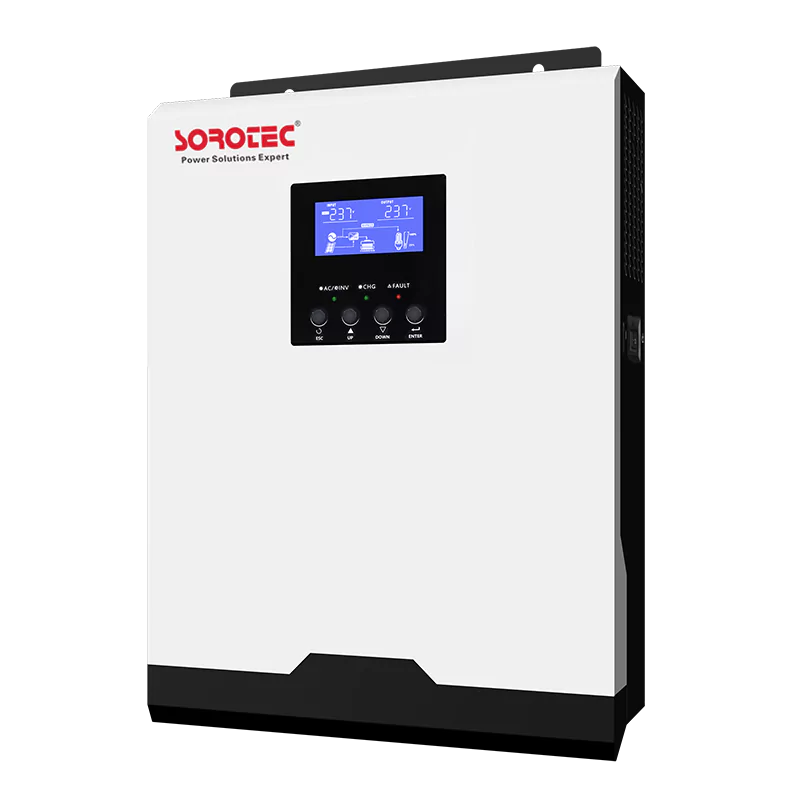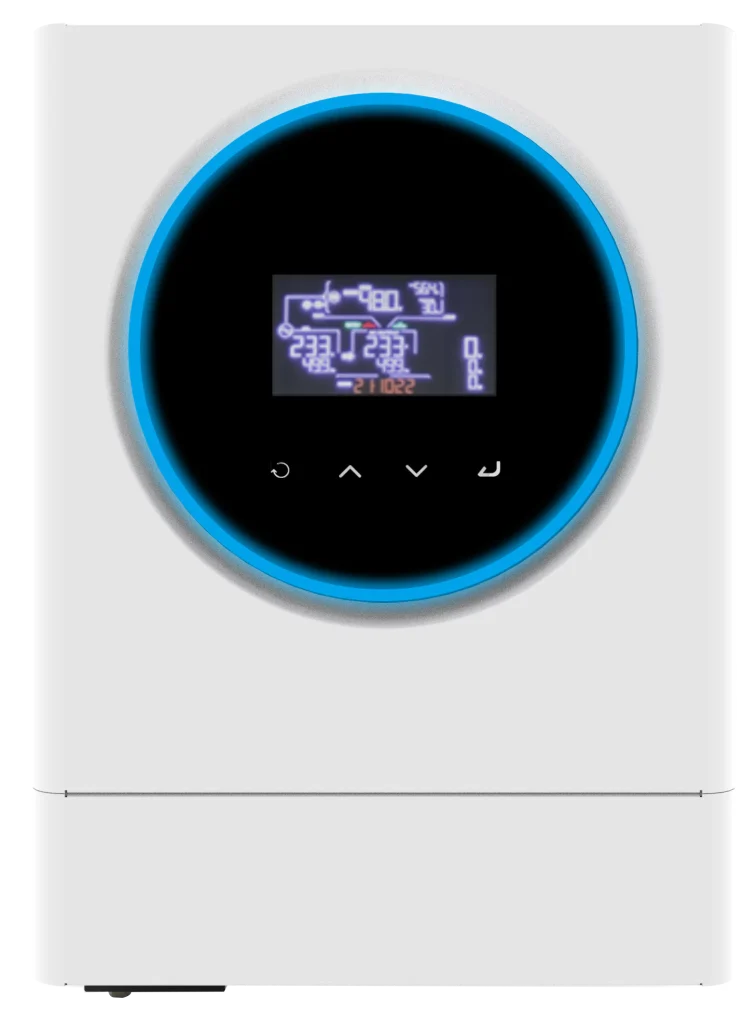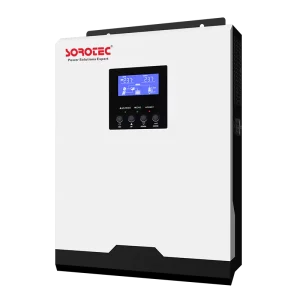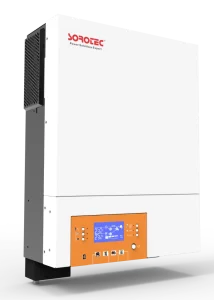Why Using Parallel Solar Inverters Supports Scalable Power Solutions
Connecting solar inverters in parallel lets multiple units share a DC source and combine their AC output to boost power. This setup makes systems easy to grow, super reliable, and really efficient—perfect for big projects, varied solar panels, or critical setups. Here’s why parallel setups work great, how they beat series systems, and what you need to know to make them work smoothly. Honestly, it’s pretty neat how flexible these systems are!
Connecting Solar Inverters in Parallel
Parallel Inverter Configurations Work in a Solar System
When you hook up solar inverters in parallel, you’re linking several inverters to the same DC source—usually a bunch of solar panels (PV arrays)—and their AC outputs combine to power a single load or feed the grid. Each inverter works on its own but adds to the total power. Unlike series setups that ramp up voltage, parallel ones boost current, letting you deliver more power without pushing any single inverter too hard.
This is awesome for big solar systems or ones with panels facing different ways or getting different shade. Each inverter can tweak its performance for its own set of panels without messing up the others. A farm in Texas used parallel inverters for panels spread across two fields with different angles, boosting energy output by 15% compared to a single inverter setup.
Parallel Setup Differs From Series Configurations
In a series setup, inverters—or usually solar panels—are connected end-to-end, which bumps up voltage but keeps current the same. If one panel gets shaded or breaks, it drags down the whole string. Parallel inverters, though, work solo and add up their power outputs, so one weak link doesn’t ruin everything.
Parallel setups are also super easy to expand. You can add more inverters as your energy needs grow without redoing your whole system—a big hassle with series designs. A small business in Arizona started with two inverters and added a third a year later, doubling their power without any major changes.
Technical Factors Are Critical for Successful Parallel Integration
Getting multiple inverters to play nice requires tight coordination. Their outputs need to match in phase, frequency, and voltage to avoid glitches or damage. This means you need inverters with strong syncing skills and solid communication, like RS-485 or CAN bus. A reserved communication port (RS485, CAN) for BMS is key for managing batteries and sharing loads across units.
You also need to balance the load so each inverter does its fair share. Overcurrent protection and fault isolation stop one bad inverter from messing up the whole system.
Benefits of Using Parallel Solar Inverter Systems
Parallel Inverters Allow Easy Scaling of Power Output
You bet! Parallel inverters make it simple to grow your system. If your energy needs go up—say, you add more machines to your factory or expand your home—you can just pop in another inverter. No need to swap out what you’ve got.
This flexibility is great for projects that grow over time or when cash is tight. You can start small and add more later. A school in California began with three inverters for their solar setup and added two more over three years, saving $5,000 by not replacing their system.
Parallel Inverters Improve System Reliability and Redundancy
Totally. If one inverter fails, the others keep chugging along, so you don’t lose power. This is huge for places like hospitals or data centers where blackouts are a big no-no.
Plus, you can fix one inverter without shutting everything down—a trick single-inverter systems can’t pull off. A clinic in Florida used parallel inverters and kept lights on during a repair, avoiding a day of canceled appointments.
Parallel Inverters Enhance Load Management Flexibility
Parallel systems let you split loads across different inverters. With two outputs for smart load management, you can prioritize key stuff—like fridges or servers—during peak times or outages while putting less urgent stuff on hold.
This smart setup makes sure energy goes where it’s needed most. A warehouse in Michigan used parallel inverters to keep critical freezers running during a power dip, saving $3,000 in spoiled goods.
Multiple Inverters Make Energy Harvesting More Efficient
Yup, especially if your panels face different directions or get partial shade. Each inverter uses its own MPPT (Maximum Power Point Tracking) to squeeze the most energy from its chunk of panels, without being held back by others.
The Hybrid Solar Energy Storage Inverter MPPT Battery Pure sine wave MPPT solar inverter with Built-in 80/120A MPPT solar charger tracks power even when sunlight changes, boosting total energy by up to 20%. A vineyard in Oregon used parallel inverters for panels on hilly land and got 10% more energy than a single-inverter setup.
Applications of Parallel Solar Inverter Systems
Parallel Inverters Suit Commercial and Industrial Use Cases
Big buildings and factories with lots of different power needs love parallel inverters. They provide the power and flexibility to handle varied loads across multiple areas.
Placing inverters closer to where power is used cuts energy loss from long wires. A factory in Illinois used parallel inverters for different production zones and saved $4,000 a year on energy bills.
Parallel Inverters Work Well for Microgrids or Off-Grid Installations
Microgrids and off-grid setups thrive with parallel inverters because they’re super reliable and flexible. Off-grid spots, like remote cabins, need steady power with no grid backup, and parallel systems deliver.
The OFF GRID INVERTER 09/10 models are built for this, with detachable LCD modules and smart scheduling for second outputs based on battery levels. A rural community in Montana used these for an off-grid microgrid and kept power steady during harsh winters.
Parallel Inverters Integrate Into Hybrid Energy Storage Systems
You bet. Hybrid systems mixing solar panels and batteries need smart power routing. Parallel inverters with a reserved communication port (RS485, CAN) for BMS handle charging and discharging across multiple units while staying in sync with grid rules if needed.
How Does SOROTEC Empower Scalable Solar Projects With Parallel Inverter Technology?
SOROTEC is a big name in power tech, with years of know-how in building hybrid solar inverters for homes, businesses, and big factories. Their stuff is made for real-world needs—from tiny off-grid villages to city buildings wanting smart energy systems—and comes with slick remote monitoring via a global cloud platform you can check on your phone anytime, anywhere. Interface Global cloud platform mobile APP anytime and anywhere open APP, support power internet applications.
Which SOROTEC Products Are Ideal for Modular Power Expansion Needs?
For homes or small shops wanting reliable, growable systems, the REVO II Series Hybrid Inverter gives pure sine wave output with built-in 80/120A MPPT chargers—great for off-grid setups you might expand later. Pure sine wave solar inverter.
For bigger projects needing solar plus battery storage across large areas, the REVO VM Series offers flexible setups with two outputs for smart load management. Easy access Two outputs for smart load management.
FAQ
Q: Can I mix different sizes of solar inverters when connecting them in parallel?
A: Technically yes—but it’s best to use identical models with matched specs to ensure balanced load sharing and synchronized operation without risk of overloading smaller units.
Q: What happens if one inverter fails in a parallel configuration?
A: The remaining units keep working normally unless they’re overloaded; this built-in backup makes systems way more reliable than single-inverter setups.
Q: Do I need special approval from utilities when installing parallel-connected grid-tied systems?
A: Yes—in most places, utilities need interconnection agreements and proof your system meets anti-islanding standards; always check local rules before setting up.









